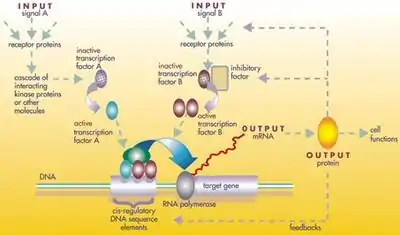Introduction
Selected article -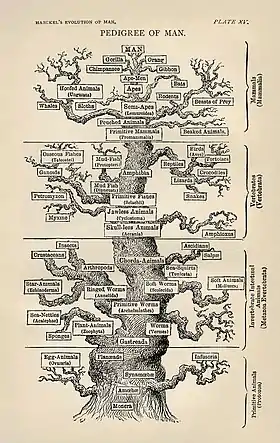 The tree of life as depicted by Ernst Haeckel in The Evolution of Man (1879) illustrates the 19th-century view of evolution as a progressive process leading towards man. Evolutionary thought, the recognition that species change over time and the perceived understanding of how such processes work, has roots in antiquity—in the ideas of the ancient Greeks, Romans, Chinese, Church Fathers as well as in medieval Islamic science. With the beginnings of modern biological taxonomy in the late 17th century, two opposed ideas influenced Western biological thinking: essentialism, the belief that every species has essential characteristics that are unalterable, a concept which had developed from medieval Aristotelian metaphysics, and that fit well with natural theology; and the development of the new anti-Aristotelian approach to modern science: as the Enlightenment progressed, evolutionary cosmology and the mechanical philosophy spread from the physical sciences to natural history. Naturalists began to focus on the variability of species; the emergence of palaeontology with the concept of extinction further undermined static views of nature. In the early 19th century prior to Darwinism, Jean-Baptiste Lamarck (1744–1829) proposed his theory of the transmutation of species, the first fully formed theory of evolution. In 1858 Charles Darwin and Alfred Russel Wallace published a new evolutionary theory, explained in detail in Darwin's On the Origin of Species (1859). Darwin's theory, originally called descent with modification is known contemporarily as Darwinism or Darwinian theory. Unlike Lamarck, Darwin proposed common descent and a branching tree of life, meaning that two very different species could share a common ancestor. Darwin based his theory on the idea of natural selection: it synthesized a broad range of evidence from animal husbandry, biogeography, geology, morphology, and embryology. Debate over Darwin's work led to the rapid acceptance of the general concept of evolution, but the specific mechanism he proposed, natural selection, was not widely accepted until it was revived by developments in biology that occurred during the 1920s through the 1940s. Before that time most biologists regarded other factors as responsible for evolution. Alternatives to natural selection suggested during "the eclipse of Darwinism" (c. 1880 to 1920) included inheritance of acquired characteristics (neo-Lamarckism), an innate drive for change (orthogenesis), and sudden large mutations (saltationism). Mendelian genetics, a series of 19th-century experiments with pea plant variations rediscovered in 1900, was integrated with natural selection by Ronald Fisher, J. B. S. Haldane, and Sewall Wright during the 1910s to 1930s, and resulted in the founding of the new discipline of population genetics. During the 1930s and 1940s population genetics became integrated with other biological fields, resulting in a widely applicable theory of evolution that encompassed much of biology—the modern synthesis. (Full article...)General images -The following are images from various evolutionary biology-related articles on Wikipedia.
Selected picture -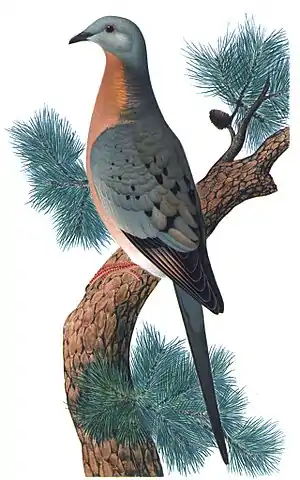 The passenger pigeon, one of several species of extinct birds, was hunted to extinction over the course of a few decades. Did you know... -
CategoriesCategory puzzle Select [►] to view subcategories
Evolutionary biology Subfields of evolutionary biology History of evolutionary biology Evolutionary biologists Evolution-related lists Evolutionary biology literature Evolutionary biology terminology Assistance Evolutionary biology concepts Darwinism Digital organisms Evolution of the biosphere Extended evolutionary synthesis Hybridisation (biology) Modern synthesis (20th century) Molecular evolution Most recent common ancestors Non-Darwinian evolution Organisms by adaptation Origin of life Paleontology Evolution by phenotype Population genetics Signalling theory Evolutionary biology societies Evolution by taxon Transitional fossils Vestigial organs Related portalsRelated subjectsTopics in biologyTasks you can do
Related topicsWikiProjectsWikiProjects connected with biology:
A complete list of scientific WikiProjects can be found here. See also Wikispecies, a Wikimedia project dedicated to classification of biological species. Associated WikimediaDiscover Wikipedia using portals
|
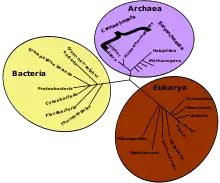
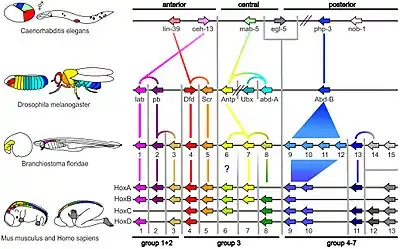

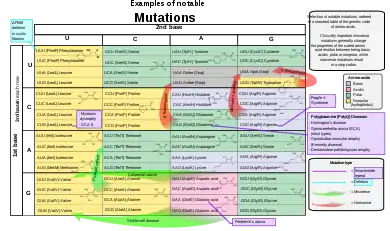


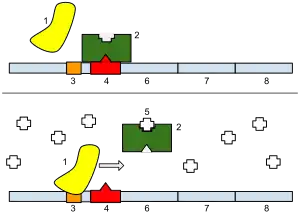
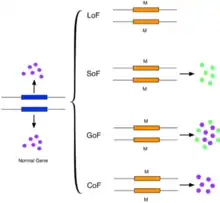
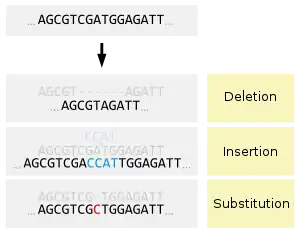
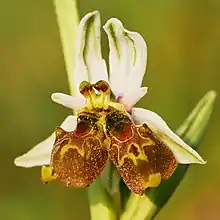


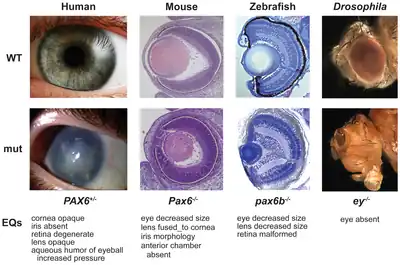
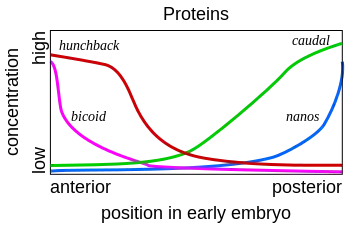
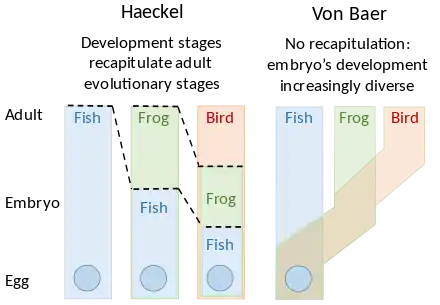
_nyererei_male.jpg.webp)

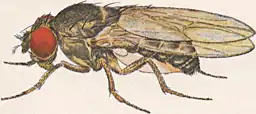
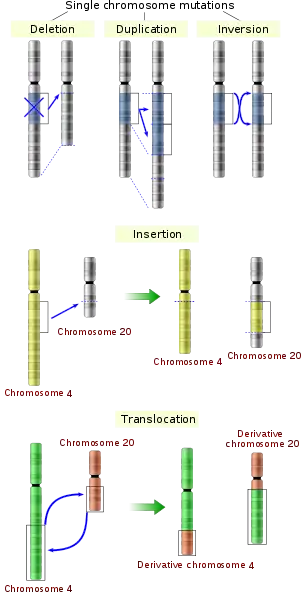
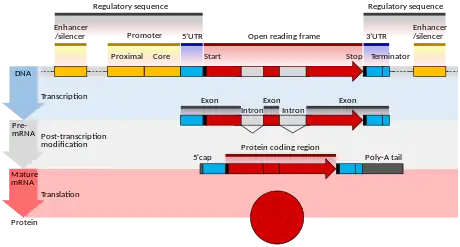
.jpg.webp)
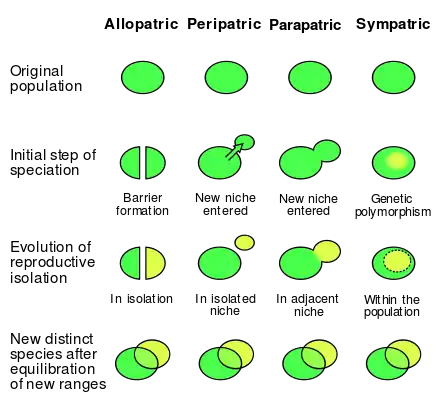
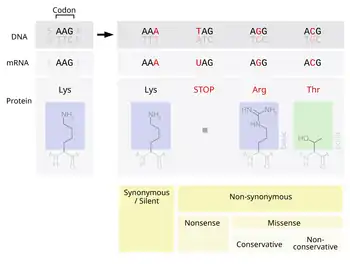
.jpg.webp)

_1_by_N._A._Naseer.jpg.webp)

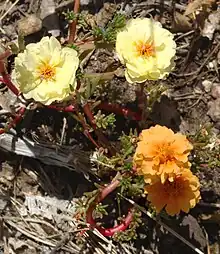


![Image 31A covalent adduct between the metabolite of benzo[a]pyrene, the major mutagen in tobacco smoke, and DNA (from Mutation)](../I/Benzopyrene_DNA_adduct_1JDG.png.webp)
